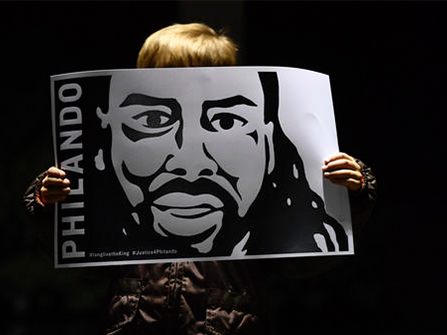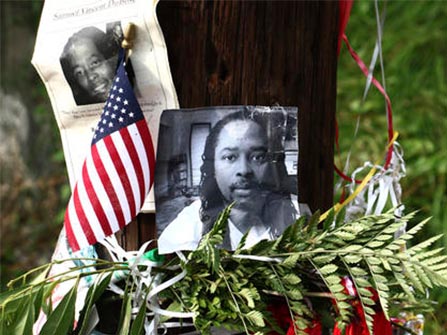
MINNEAPOLIS (AP) — When Philando Castile was shot by a Minnesota police officer, his girlfriend broadcast his final moments live on Facebook. But experts say the footage from a squad car camera was probably a bigger factor in prosecutors’ decision to charge the officer with manslaughter.
And that footage, which has not been made public, is still no guarantee that Jeronimo Yanez will be convicted, as other police shootings have shown.
“There have been cases that had video that resulted in either an acquittal or a hung jury, so sometimes the video may raise more questions,” said Philip Stinson, a criminologist at Bowling Green State University who tracks fatal police shootings. “It’s very hard to convict in these cases.”
Since the beginning of 2005, a total of 78 officers in the U.S. have been charged with murder or manslaughter. Of that number, about a third of the defendants were convicted — 14 by juries and 13 through guilty pleas, Stinson said.
Of the 18 police officers charged with murder or manslaughter last year, at least 11 cases involved video evidence, he said.
Some of those cases are still pending, including the one against Chicago officer Jason Van Dyke, who was charged last year with first-degree murder in the 2014 killing of 17-year-old Laquan McDonald. Van Dyke was charged the same day the city, under judge’s orders, released dashcam video that showed he shot the teen 16 times.
Video does not always lead to a conviction. The trial of Ray Tensing, who was charged with murder in the 2015 death of Sam Dubose near the University of Cincinnati campus, ended with a deadlocked jury and a mistrial, despite video from Tensing’s body camera.

In the Minnesota case, Yanez was charged Wednesday with second-degree manslaughter, which carries a maximum 10-year prison sentence, and other counts. Prosecutors say he shot the 32-year-old elementary school cafeteria worker seven times in July after Castile told him he was armed and had a license to carry.
Prosecutors concluded that the situation did not call for deadly force. They said the charges were based on evidence that included squad car video and conflicting statements from Yanez.
Yanez turned himself in Thursday, was processed and released. He is expected to make his first court appearance Friday. One of his attorneys, Earl Gray, said he had not read the charges but “we weren’t hired to plead guilty. We were hired to go to trial.” Another defense attorney, Tom Kelly, has previously said Yanez reacted to the presence of a gun.
Some of the video shot by Castile’s girlfriend, Diamond Reynolds, could be relevant because it might provide context or back up witness statements, said Jeff Cramer, a former federal prosecutor and managing director of the Berkeley Research Group in Chicago.
But Cramer predicted the dashcam video will be more revealing.
“Video does give prosecutors the ability to bring stronger cases, and it gives jurors the ability to see what happened,” Cramer said.
Based on information that’s been publicly released about the case, Cramer said, it seems Yanez would be hard-pressed to articulate a reason for drawing his weapon and firing. He noted that Yanez gave different statements on the night of the shooting than he did to investigators later.
“The officer didn’t wake up that day saying, “I’m going to kill somebody,'” Cramer said. “This is just a tragic incident … but this one could have been avoidable. I’m not sure what else Philando Castile could have done.”
Lee Berlin, a criminal defense attorney in Tulsa, Oklahoma, and a former state prosecutor, said the video provides important context for the jury, and the combination of video with witness testimony is powerful. Still, he said, these cases are tough.
“I would much rather defend this case than prosecute it,” he said, adding that the video streamed by Reynolds showed an officer who was clearly distraught but maintained a position of authority.
“It all comes down to what that officer saw at a particular time” and whether “a reasonable officer” would have done the same thing, Berlin said. He said a defense attorney would need only to plant a reasonable doubt with jurors and to show that Yanez was afraid.
The multiple shots fired by Yanez show the “real palpable fear and concern he must’ve had,” according to Berlin.
That said, when Castile told Yanez he had a permit to carry a weapon, that should have been a signal that Castile was not a felon, Berlin added. But if Castile made any move that was not authorized by Yanez, it would be tough to find fault with Yanez’s actions.
“I have no idea,” Berlin said, “what he actually saw in those brief moments.”
Like BlackAmericaWeb.com on Facebook. Follow us on Twitter.
(Photo Source: AP)
















